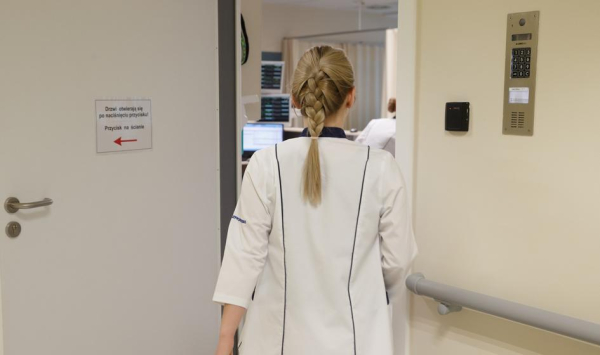Currently, there is a shortage of 156 thousand nurses – according to a report published on Monday by the National Trade Union of Nurses and Midwives. Forecasts indicate that the demand for their work will grow and in 2039 there will be a shortage of 262 thousand nurses – the report notes.

The report “Nurse Personnel Analysis” was presented at a press conference of the Polish Trade Union of Nurses and Midwives ph. “It's bad, it will get worse. Is the Polish healthcare system ready for the upcoming turbulence? Nurses' personnel model until 2039.”
The report shows that the gap between demand and available nurses will grow from 156,000 currently to around 262,000 in 2039. According to the forecasts included in the report, by 2039 the number of nurses working with patients will decrease to 199,000, from the current 216,000.
Almost twice as few nurses as in other countries
The report notes that in Poland there are 5.7 nurses per thousand inhabitants, while in the countries in the comparison group this ratio is on average 11.2.
It was emphasized that Poland does not match these countries also in the number of care personnel. The total number of nursing and care personnel in Poland is almost 4 times lower than in the countries from the comparison group – it was noted.
Krzysztof Zdobylak, an expert in the transformation and development strategies of the healthcare system and co-author of the report, emphasised that in Poland there is less than one caregiver per thousand people, while in countries with effective systems there are 14 such caregivers.
The number of seniors is growing too fast
The report estimates that the rate of increase in the number of nurses should be much faster. Since 2010, the number of seniors in Poland has increased by 47%, while at the same time the number of nurses (according to PWZ) has increased by only 12%. It was emphasized that since 2019, the number of nurses working with patients has remained relatively constant, while the number of seniors is growing.
The report notes that without intervention, the situation in some provinces could become dramatic, with fewer than four nurses per thousand inhabitants and demand reaching more than 12 or 13 nurses per thousand inhabitants.
OZZPiP Chairwoman Krystyna Ptok said that the expert analysis confirmed what the union has been saying for years: there is a shortage of nurses, and it will get worse. She emphasized that actions are needed beyond political divisions to prevent the growing deficit of nursing staff.
According to the authors of the report, these include: delaying the retirement of subsequent groups, educating new nursing staff, retaining and increasing the current staff of working age, ensuring safe working conditions, staff safety and adequate staffing.
The presented data shows that out of 319 thousand nurses with the right to practice (PWZ), 216 thousand work with patients; 90 percent at least partially in the public system. (PAP)
kno/ agz/






